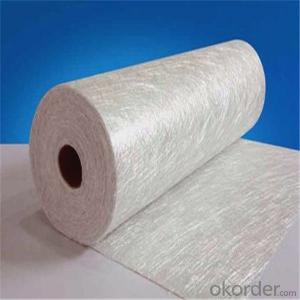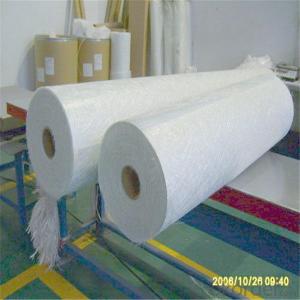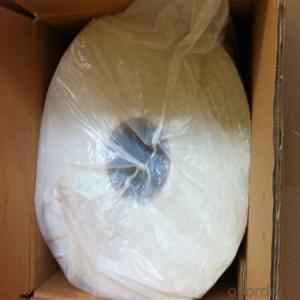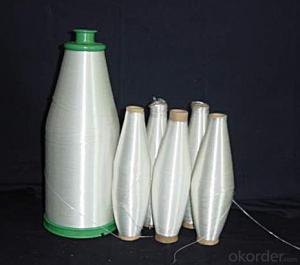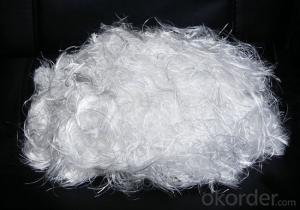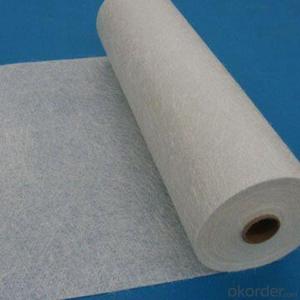2015 1040mm Fibreglass Chopped Stand Mat
- Loading Port:
- Tianjin
- Payment Terms:
- TT OR LC
- Min Order Qty:
- 100 m.t.
- Supply Capability:
- 20000 m.t./month
OKorder Service Pledge
Quality Product, Order Online Tracking, Timely Delivery
OKorder Financial Service
Credit Rating, Credit Services, Credit Purchasing
You Might Also Like
Quick Details
| Technique: | Chopped Strand Fiberglass Mat (CSM) | Dimensions: | 450gsm | Mat Type: | Continuous Filament Mat |
| Fiberglass Type: | E-Glass | Softness: | softness | Place of Origin: | Jiangxi, China (Mainland) |
| Brand Name: | cnbm | Model Number: | 450gsm | color: | white |
| fiberglass type: | E glass | product: | e-glass powder chopped stand mats | binder: | powder or emulsion |
| width: | 1040 or 1270mm, as your requirement | weight: | 30 or 45kg/roll | paper tube diameter: | 90mm |
| outer diameter of roll: | 256mm | packing: | plastic film+carton box + pallet |
Packaging & Delivery
| Packaging Details: | plastic film+carton box + pallet |
| Delivery Detail: | 15-20days |
Specifications
1.e-glass powder chopped stand mats
2.binder:power or emulsion
3.width:1040mm or 1270mm
4.weight:450gsm
Picture
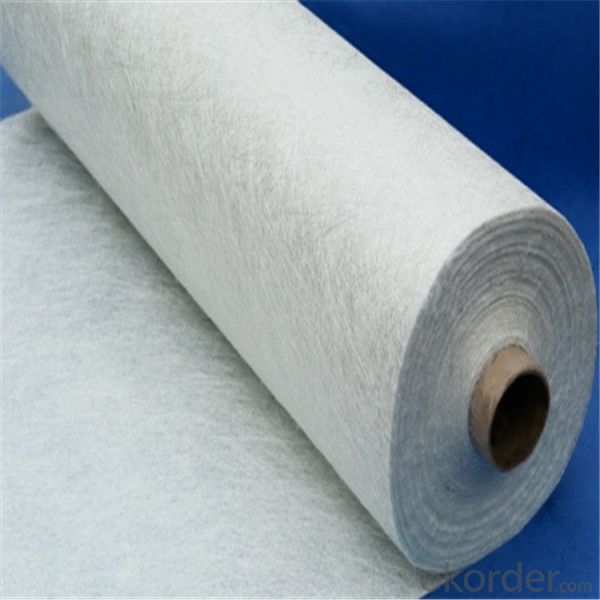
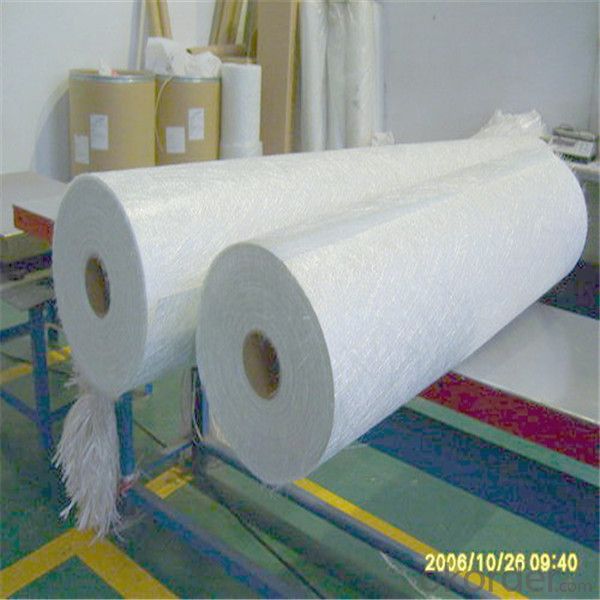
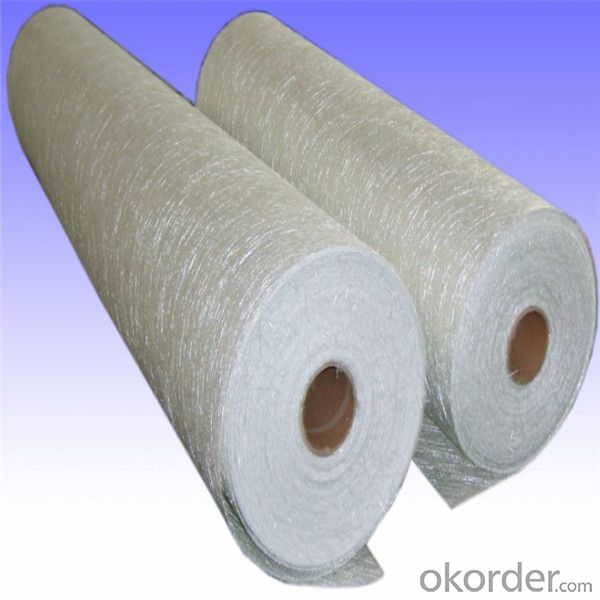
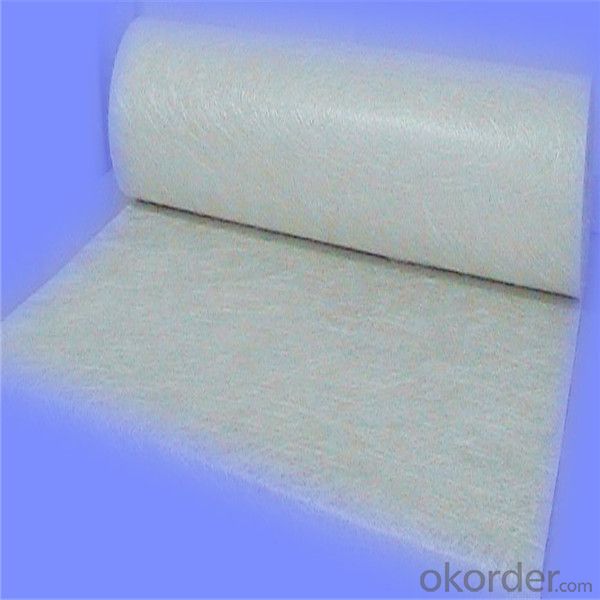
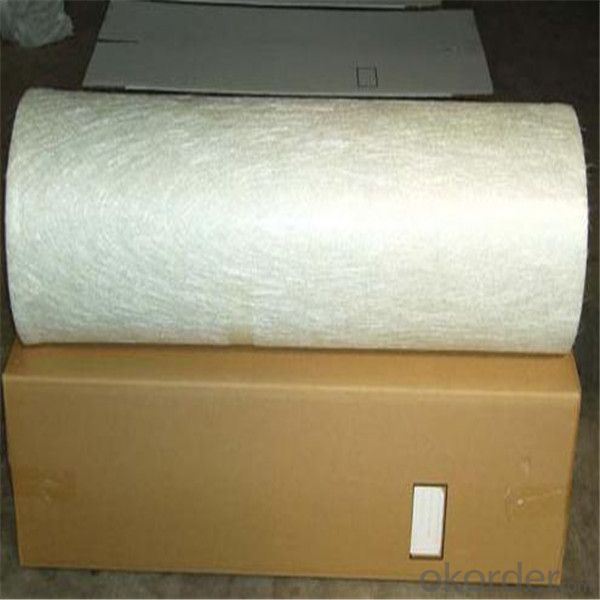
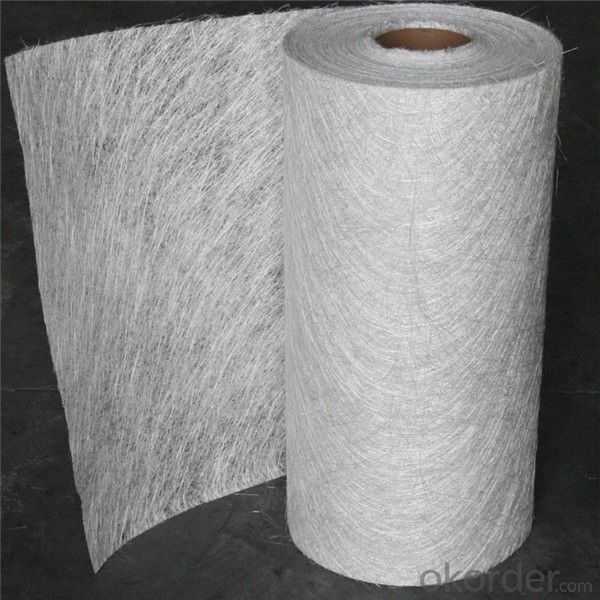
- Q:What is the typical moisture content of fiberglass chopped strand?
- The typical moisture content of fiberglass chopped strand can vary depending on various factors such as storage conditions, manufacturing processes, and the specific type of fiberglass used. However, in general, fiberglass chopped strand is typically produced and maintained at a moisture content of less than 0.2%. This low moisture content is essential to ensure the optimal performance and stability of the fiberglass in various applications such as composites, insulation, and reinforcement materials.
- Q:What are the typical fatigue properties of fiberglass chopped strand composites?
- Various factors, such as the type of resin matrix, fiber orientation, and manufacturing process, influence the typical fatigue properties of fiberglass chopped strand composites. However, when compared to other materials, these composites generally exhibit favorable fatigue resistance. The type of resin matrix used is a crucial factor in determining the fatigue properties of fiberglass chopped strand composites. Resin systems with different characteristics can greatly impact the composite's fatigue life. Epoxy resins, which are commonly utilized in fiberglass composites, are known for their good fatigue resistance and ability to provide long-lasting performance under cyclic loading conditions. Fiber orientation is another critical aspect that affects the fatigue properties of these composites. The arrangement of the chopped fibers within the matrix can influence the composite's fatigue strength and durability. Typically, composites with aligned fibers demonstrate higher fatigue strength compared to those with randomly oriented fibers. Furthermore, the manufacturing process employed also plays a role in determining the fatigue properties. Factors like the volume fraction of fibers, curing conditions, and manufacturing defects can impact the composite's fatigue behavior. Employing proper manufacturing techniques, such as controlling fiber content and minimizing defects, can enhance the fatigue resistance of fiberglass chopped strand composites. In general, fiberglass chopped strand composites demonstrate good fatigue properties. They are renowned for their high strength-to-weight ratio, excellent resistance to cyclic loading, and ability to withstand repeated stress. These properties make them suitable for various industries, including aerospace, automotive, marine, and sporting goods. However, accurately determining the fatigue properties of a specific fiberglass chopped strand composite requires considering the specific resin, fiber orientation, and manufacturing process involved.
- Q:What are the shear strength properties of fiberglass chopped strand?
- The shear strength properties of fiberglass chopped strand are affected by various factors, including the length and alignment of the strands, the resin matrix used, and the manufacturing process. In general, fiberglass chopped strand demonstrates good shear strength due to the interlocking nature of the randomly-oriented strands. The length of the chopped strands has a significant impact on shear strength. Longer strands tend to offer higher shear strength as they can distribute the applied load over a larger area. However, shorter strands may be preferred for specific applications where improved flow and easier processing are desired. The alignment of the chopped strands also influences shear strength. Randomly-oriented strands provide better interlocking and resistance to shear forces compared to aligned or unidirectional fibers. The random orientation enables the distribution of forces in multiple directions, enhancing the overall shear strength of the material. The resin matrix used in fiberglass chopped strand composites also plays a crucial role in determining shear strength properties. The resin should adhere well to the fibers and provide sufficient bonding strength to withstand shear loads. Epoxy resins, for example, are commonly used due to their excellent adhesion properties and high shear strength. The manufacturing process employed to produce fiberglass chopped strand can also impact shear strength properties. Factors such as compaction pressure, curing temperature, and post-processing techniques can influence the final shear strength of the material. Careful control of these parameters during manufacturing can optimize the shear strength properties of fiberglass chopped strand. In conclusion, fiberglass chopped strand demonstrates favorable shear strength properties due to the interlocking nature of the strands and the bonding strength provided by the resin matrix. However, it is important to consider the specific requirements of the application and select the appropriate fiber length, alignment, resin matrix, and manufacturing process to ensure optimal shear strength performance.
- Q:Is fiberglass chopped strand suitable for automotive body panels?
- Yes, fiberglass chopped strand is suitable for automotive body panels. Fiberglass is a versatile material that offers several advantages for automotive applications. It is lightweight, which helps improve fuel efficiency and overall vehicle performance. Fiberglass also has excellent strength-to-weight ratio, making it a durable option for body panels that can withstand impacts and resist deformation. Chopped strand fiberglass is particularly suitable for automotive body panels due to its ability to be easily molded and shaped into complex designs. The chopped strands of fiberglass are mixed with a resin matrix and then formed using various molding techniques such as compression molding or injection molding. This allows for the creation of body panels with precise dimensions and contours, ensuring a seamless fit on the vehicle. Furthermore, fiberglass has good corrosion resistance, which is crucial for automotive applications where the body panels are exposed to various weather conditions and environmental factors. It also provides good thermal and electrical insulation properties, adding to its suitability for automotive body panels. Overall, fiberglass chopped strand is a suitable material for automotive body panels, offering lightweight, durability, ease of molding, and resistance to corrosion. It has been widely used in the automotive industry for many years and continues to be a popular choice for manufacturers.
- Q:Does fiberglass chopped strand improve the impact resistance of composite materials?
- Yes, fiberglass chopped strand does improve the impact resistance of composite materials. Chopped strand is made up of small, randomly oriented fibers that are mixed into the composite material during the manufacturing process. These fibers provide reinforcement and enhance the overall strength and durability of the composite. When an impact occurs, the fiberglass chopped strand helps to distribute the force and absorb the energy, preventing it from concentrating in one area and causing damage. The fibers act as a barrier, absorbing and dispersing the impact energy throughout the composite material, thereby reducing the likelihood of cracks or fractures. Furthermore, fiberglass chopped strand enhances the interfacial bonding between the fibers and the matrix of the composite, improving the load transfer capability. This increased bonding strength contributes to the overall impact resistance of the composite material. In summary, the addition of fiberglass chopped strand to composite materials significantly improves their impact resistance by dispersing and absorbing impact energy, preventing localized damage, and enhancing the overall strength and durability of the composite.
- Q:Can fiberglass chopped strand be used in construction applications?
- Yes, fiberglass chopped strand can be used in construction applications. It is commonly used as reinforcement material in various construction products such as concrete, asphalt, and composites. The chopped strands are typically mixed with other materials to enhance strength, durability, and resistance to impact, heat, and corrosion. Additionally, fiberglass chopped strand is also used for insulation purposes in construction, providing thermal and sound insulation properties. Overall, fiberglass chopped strand is a versatile and cost-effective material that can be utilized in a wide range of construction applications.
- Q:How does the toughness of the chopped strand affect its performance?
- The performance of the chopped strand is directly influenced by its toughness in several ways. Firstly, a higher level of toughness indicates a greater capability to withstand stress without breaking or failing. This means that a chopped strand with higher toughness can endure more strain or force before it fractures or tears. This is especially important in applications where the chopped strand experiences high levels of mechanical stress or impact, like in reinforced composites or structural components. Furthermore, the toughness of the chopped strand also affects its ability to maintain its integrity and mechanical properties over time. A higher level of toughness generally implies a superior ability to resist degradation or wear, ensuring that the chopped strand remains effective and reliable for a longer duration. This is of utmost importance in industries where durability and longevity are crucial factors, such as automotive, aerospace, or construction. Additionally, the toughness of the chopped strand can also impact its handling and processing characteristics. A higher level of toughness may make it more challenging to cut or manipulate the chopped strand during fabrication, necessitating specialized equipment or techniques. On the other hand, a lower level of toughness may make the chopped strand more susceptible to breakage or damage during handling, potentially leading to quality issues or decreased performance. To summarize, the performance of the chopped strand is directly influenced by its toughness, which determines its resistance to breakage, ability to maintain mechanical properties over time, and handling characteristics. Therefore, it is crucial to understand and optimize the toughness of the chopped strand to ensure its effectiveness and reliability in various applications.
- Q:Does fiberglass chopped strand improve the thermal conductivity of composite materials?
- No, fiberglass chopped strand does not improve the thermal conductivity of composite materials. In fact, it can actually lower the thermal conductivity due to its insulating properties.
- Q:Is fiberglass chopped strand suitable for sports equipment manufacturing?
- Yes, fiberglass chopped strand is suitable for sports equipment manufacturing. Fiberglass is a lightweight, durable, and strong material that is commonly used in the production of various sports equipment such as boats, kayaks, surfboards, hockey sticks, and helmets. The chopped strand form of fiberglass consists of small glass fibers that are randomly oriented and can be easily mixed with resin to create a composite material. This allows for flexibility and customization in the manufacturing process, as the chopped strand can be easily molded and shaped to meet the specific requirements and design of different sports equipment. Additionally, fiberglass has excellent tensile strength, impact resistance, and dimensional stability, making it an ideal choice for sports equipment that needs to withstand rigorous use and potential impacts.
- Q:What are the flexural modulus properties of fiberglass chopped strand?
- The ability of fiberglass chopped strand to resist deformation when bent or flexed is referred to as its flexural modulus properties. Fiberglass chopped strand is renowned for its impressive flexural modulus, indicating that it can withstand bending forces and maintain its shape when under stress. This particular attribute is a result of the reinforcing fibers present in the fiberglass, which provide the material with strength and rigidity. The flexural modulus of fiberglass chopped strand can vary based on various factors, including the length and orientation of the fibers, the type of resin matrix employed, and the manufacturing process. Nevertheless, fiberglass chopped strand generally exhibits outstanding flexural modulus properties, making it a favored option for applications requiring structural strength and stiffness.
1. Manufacturer Overview |
|
|---|---|
| Location | |
| Year Established | |
| Annual Output Value | |
| Main Markets | |
| Company Certifications | |
2. Manufacturer Certificates |
|
|---|---|
| a) Certification Name | |
| Range | |
| Reference | |
| Validity Period | |
3. Manufacturer Capability |
|
|---|---|
| a)Trade Capacity | |
| Nearest Port | |
| Export Percentage | |
| No.of Employees in Trade Department | |
| Language Spoken: | |
| b)Factory Information | |
| Factory Size: | |
| No. of Production Lines | |
| Contract Manufacturing | |
| Product Price Range | |
Send your message to us
2015 1040mm Fibreglass Chopped Stand Mat
- Loading Port:
- Tianjin
- Payment Terms:
- TT OR LC
- Min Order Qty:
- 100 m.t.
- Supply Capability:
- 20000 m.t./month
OKorder Service Pledge
Quality Product, Order Online Tracking, Timely Delivery
OKorder Financial Service
Credit Rating, Credit Services, Credit Purchasing
Similar products
New products
Hot products
Related keywords



